 |
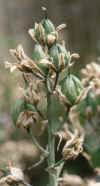 |
 |
 |
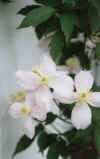 |
| Bluebells flowers
have 6 petals fused into a tube. Insects must crawl right in to get at the nectar. Notice
the strap shaped leaves. |
After the flowers
have finished the seeds form inside these fruits. Each fruit has three compartments. |
A head of purple
sprouting broccoli. Like a cauliflower head the broccoli is a bunch of flower buds. |
A crocus flower,
clearly showing the stamens and stigma. You can also clearly see pollen grains both on the
stamens and some brushed onto the petals. |
Clematis flowers
have four petals but many stamens and stigmas. This photo clearly shows the arrangement of
parts. |
| Mike Freedman |
Mike Freedman |
Mike Freedman |
Mike Freedman |
Mike Freedman |
| 143Kb |
148Kb |
106Kb |
109Kb |
159Kb |
Flowers, Fruit and Seeds 2 | Flowers,
Fruit and Seeds 3
Return to Photo Index |
 |
 |
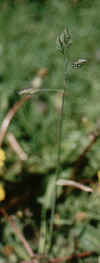 |
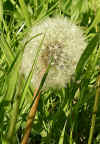 |
 |
| Columbine
is also known as Aquilegia. Its petals have long, horn shaped nectaries. Bees and other
insects crawl right inside and cannot avoid rubbing against the stamens and styles as they
do so. |
Cocksfoot grass.
Grasses are wind-pollinated so their flowers are not adapted to attract insects. |
2
views of dandelion clocks. Each "fairy" is a fruit which is perfectly adapted
for dispersal by the wind. |
| Mike
Freedman |
Mike Freedman |
Mike
Freedman |
|
117Kb |
125Kb |
117Kb |
164Kb |
99Kb |
| |
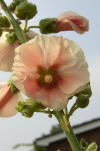 |
 |
 |
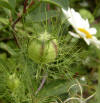 |
 |
|
Hollyhock. This large flower grows on a
tall spike which can be well over 2 metres tall. Bumble bees love
them. There is a photo of a bumble bee feeding on a hollyhock flower
on our animals page. |
Here, a couple of hollyhock flowers just
beginning to open. Notice how the petals are curled. |
Nigella, or Love-in-a-mist grows
abundantly in gardens. In this photo you can clearly see the stamens
and long, curly styles. Nigella seeds can, apparently, be used in
cookery and rabbits love the taste of the leaves. |
Later in the year Nigella flowers give
way to these large inflated seed heads, containing large numbers of
tiny black seeds. When the heads dry the seeds are shaken out of
little opening near the top (see second photo) when the wind blows
or the stalks are knocked by passing animals. |
| Mike
Freedman |
|
219Kb |
140Kb |
90Kb |
147Kb |
117Kb |